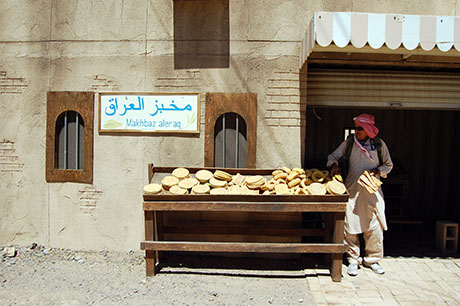
IMAGE: A street market in the U.S. military’s fake Afghan village of Ertebat Shar. All photographs by Nicola Twilley.
Every unit of the U.S. military, immediately prior to combat deployment, spends three weeks at the National Training Centre at Fort Irwin, California. Scattered across a base the size of Luxembourg, in the middle of the Mojave Desert, the Department of Defence has built fifteen simulated towns populated by 350 civilian role-players, many of Middle Eastern origin.
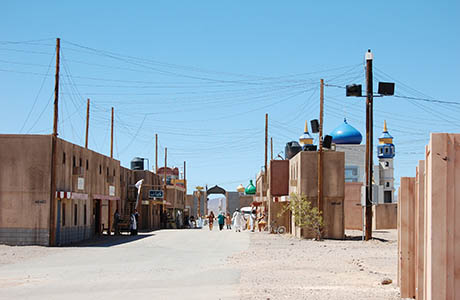
Post-Cold War, and following the disastrous U.S. “Black Hawk Down” raid in Mogadishu, national security experts, Pentagon top brass, and military contractors alike have agreed that the future of warfare lies, as the U.S. Army War College Quarterly declared, “in the streets, sewers, high-rise buildings, and sprawl of houses that form the broken cities of the world.”
The challenge, as expressed in “Urban Combat: Confronting the Specter,” a 1999 article from the Military Review, is that “the city presents a very special type of problem for strategic and operational commanders and their staffs. […] Civilian populations frustrate the “war convention”—those rules that guide military conduct.”
In other words, in a city, an army has to deal with an already unusually complex and dangerous spatial situation that is made yet more challenging thanks to its dense concentration of people going about their daily business, against whom the use of force is “constrained, for political, economic, public relations, or humanitarian reasons” (and, one might hopefully add, ethical concerns).
“The crowded bazaar” is, Mr. Grau and Dr. Kipp of the Foreign Military Studies Office conclude, a recipe for “combat in hell.”
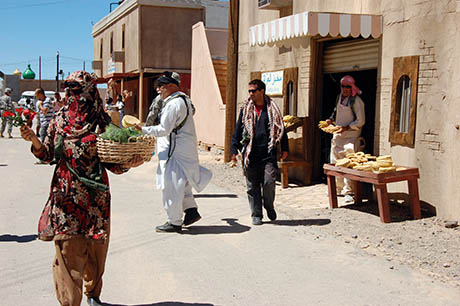
And thus it is that the U.S. military hires Afghan-American civilians to pretend to sell plastic bread and meat on the streets of a shipping container village in California, in order to prepare its forces to successfully navigate the urban inferno.
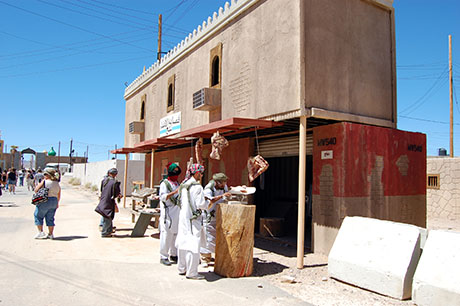
I would love to read a strategy paper that explicitly dissects combat techniques for the urban street market context (if you know of such a thing, send it my way, please!).
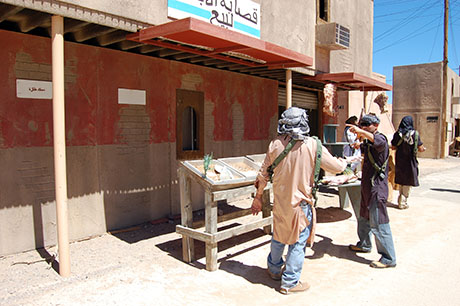
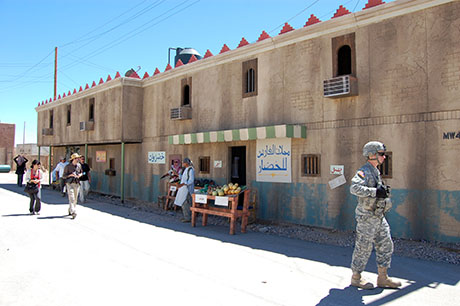
In its absence, and while there are many interesting things to be said about both plastic food, and war and food, this post serves instead as a tenuously food-related excuse to encourage you to (re-)visit the Venue website. There, you can read our much longer post describing an afternoon spent observing military training in the fake Afghan village of Ertebat Shar, as well as other new interviews that touch on the difficulty of integrating food systems into the new version of SimCity, water rights in the American West, and much more besides.

